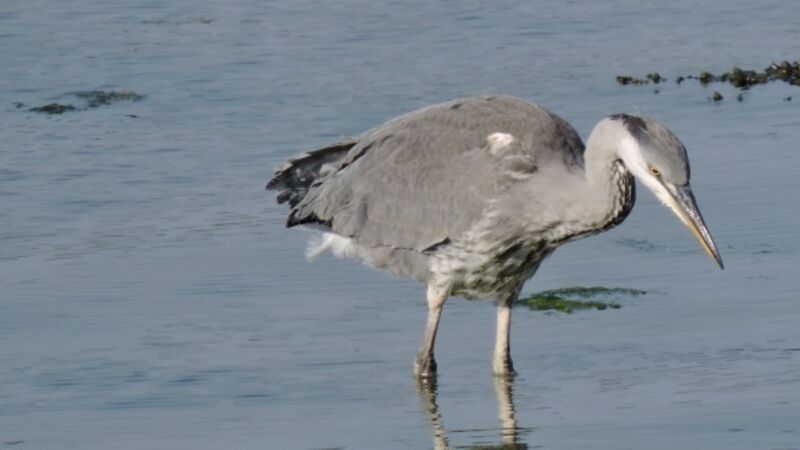The curlew tolls the knell of parting day

It was a learning process, the parents having already tutored it for a few sessions before abandoning the family. They would have felt no further responsibility; it was, from now on, on its own.
It may have been a son or daughter of ‘our’ heron, named Ron by my English daughter-in-law. I couldn’t help but think it should be called Ronson, like the famous cigarette lighter.
In any case, we do know that our freeloader Ron’s chicks are fledged and gone, because he no longer knocks on the window or plagues us for food every time we venture outdoors as he has been doing for the last two months, reaching near-frantic efforts in the last weeks until suddenly, almost overnight, calming to the casual loitering of the bachelor, no demands upon him (and us) anymore.
He now hangs about the yard and garden, a gentleman of leisure. Goodbye wife — who knows where she’s gone: the only time she ever followed him to this, his favourite diner, he saw her off the premises toot-sweet, not being prepared to tolerate competition, even from the mother of his children.
Ron, unlike other local herons, did not have to spend half the night, every night, up to his oxters in the bay, providing for the family. He simply winged it to Chez Enright, to harass the residents for anything they could provide. If no bycatch or fishy offcuts were available, he would accept chicken bones or cheap meat — but not sausages. He had a deep suspicion of any processed food.
The industry of herons in the breeding season is formidable. When the chicks begin to grow, the parents fish 24/7. A friend in the village who has heron nests in the trees behind her house tells us that she is woken at hourly intervals between midnight and dawn by raucous cries and noisy squabbling when the parents come to deliver the latest catch.
And no wonder they are noisy, and that the parents must labour around the clock to sustain them; there may be as many as four young, and in the weeks before they leave the nest they are each as big as the parent birds.
We know, from our experience, that a young heron can put away 750g of fish a day before it can fly. Adding the fact that the adults have to feed themselves as well, one arrives at 4.5kg of food to be caught daily.
In the hours of darkness, the adults fish under street lights or when the tide is low enough for them to wade nearby, under the lights on the pier.
Also, nature’s synchronicity arranges it so that as the clutch matures, dawn breaks earlier each day, and while we humans still sleep, both parents are already fishing; the young are, by then, too big to be threatened by magpies, grey crows or ravens. They simply sit and grow strong enough to wield those enormous wings for first flight.
Regarding predation on nestlings by the crow family, it is sad to hear that while naturalists bemoan the fact that there are now only 22 breeding pairs of curlews left in Ireland, nature colludes in the decimation.
A friend, fishing at Lough Corrib in Co Galway a few weeks ago, saw that a curlew pair was nesting on a small island where they were safe from habitat loss, rats and foxes. However, a grey crow appeared, alighting nearby.
Instantly, the curlew rose from the nest and flew at it, shrieking like a demented banshee. The crow winged it, fast as it could, into the scrub and trees. Close on its tail, came the curlew, dodging and ducking with the speed and agility of a sparrowhawk. My pal, a lifelong birder had never seen saw a curlew fly so fast or perform such aerobatics before.
However, an hour later the grey crow came again; and this time, my pal noticed its mate high on a tree on the nearby island; and it was watching. Once again, the sitting curlew rose and lit out after the interloper but now the crow, rather than leaving, prolonged the pursuit.
And while it did so, its mate flew in, low over the water, and all watchers in the boat were saddened to see it carry off a squirming baby curlew in its beak.










